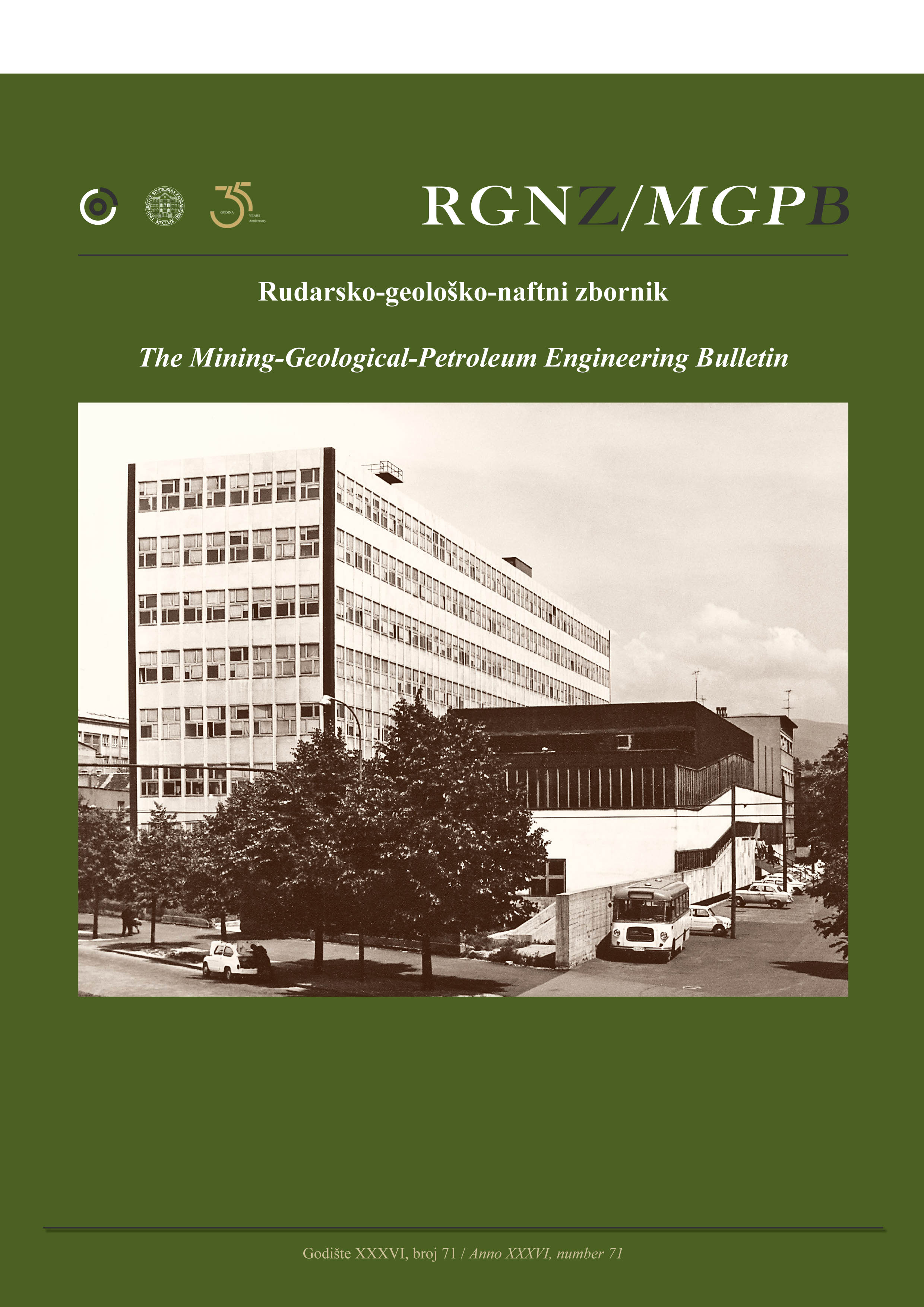Shallow subsurface structures and Quaternary deformations on the easternmost Matano fault, Indonesia, revealed by electrical resistivity tomography
DOI:
https://doi.org/10.17794/rgn.2024.5.5Keywords:
active fault, Electrical resistivity tomography (ERT), Matano fault, seismic hazard, strike-slip faultAbstract
In active fault studies, electrical resistivity tomography (ERT) with wide electrode spacing (10 m) and fewer than 60 electrodes is typically utilized. However, this configuration limits the ability of ERT to resolve detailed geological information, such as fault geometry and motion, small-scale offset, and thickness of Quaternary layers. High-resolution electrical resistivity tomography (ERT) with narrow electrode spacing (1.5‒5 m) and 112 electrodes offers an opportunity to uncover finer geological information. This study combines ERT measurements with geological data from trenches and field observations to investigate the subsurface structures and Quaternary deformation on the easternmost Matano fault. On ERT sections, the easternmost Matano fault is characterized by deformed resistivity layers and resistivity contrasts. The subsurface fault structures dip steeply and indicate reverse and normal motions for the vertical component, with the displacement related to the Quaternary faulting ranging from 3 to 26 m. Notably, fault structures on ERT sections are not necessarily expressed by geomorphic features, suggesting obscured tectonic features. This study demonstrates the reliability of high-resolution electrical resistivity tomography (ERT) in unveiling geological information, such as fault location and geometry, fault vertical motions, buried fault structures, small-scale vertical offsets, stratigraphy, and Quaternary sediment thickness, which are essential for seismic hazard assessment.
Downloads
Additional Files
Published
How to Cite
Issue
Section
License
Copyright (c) 2024 Adi Patria, Muhammad Hanif, Danny Hilman Natawidjaja, Mudrik Rahmawan Daryono

This work is licensed under a Creative Commons Attribution 4.0 International License.
Creative Commons-BY
Authors who publish with this journal agree to the following terms:
In agreeing this form, you certify that:
- You read the ethical codex of the RGN zbornik available at journal web.
- You submitted work is your original work, and has not previously been published and does not include any form of plagiarism.
- You own copyright in the submitted work, and are therefore permitted to assign the licence to publish to RGN zbornik.
- Your submitted work contains no violation of any existing copyright or other third party right or any material of an obscene, libellous or otherwise unlawful nature.
- You have obtained permission for and acknowledged the source of any illustrations, diagrams or other material included in the work of which you are not the copyright owner.
- You have taken due care to ensure the accuracy of the work, and that, to the best of your knowledge, there are no false statements made within it.
- All co-authors of this submitted work are aware of, and in agreement with, the terms of this licence and that the submitted manuscript has been approved by these authors.
Publication licence
You retain copyright in your submitted work, according to journal license policy (CC-BY). By signing this form you agree that RGN zbornik may publish it under the publication licence. In summary the licence allows the following:
Anyone is free:
- To copy, distribute, display, and perform the work.
- To make derivative works.
Under the following conditions:
- The original author must always be given credit.
- The work may not be used for commercial purposes.
- If the work is altered, transformed, or built upon, the resulting work may only be distributed under a licence identical to this one.
Exceptions to the licence
In addition to publishing the work printed under the above licence, RGN zbornik will also enable the work to be visible online.
The journal editorial can change the licence rules anytime but it cannot retroactively restrict author(s) rights.


